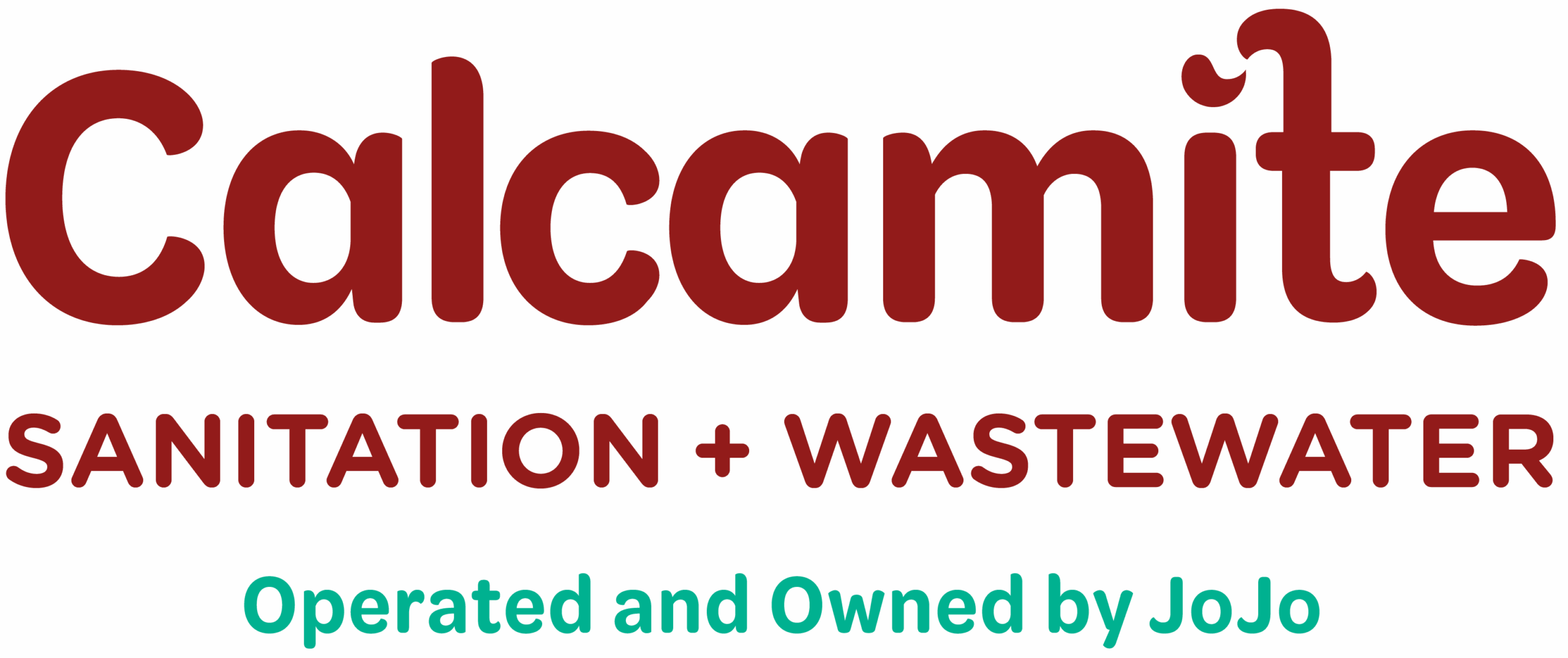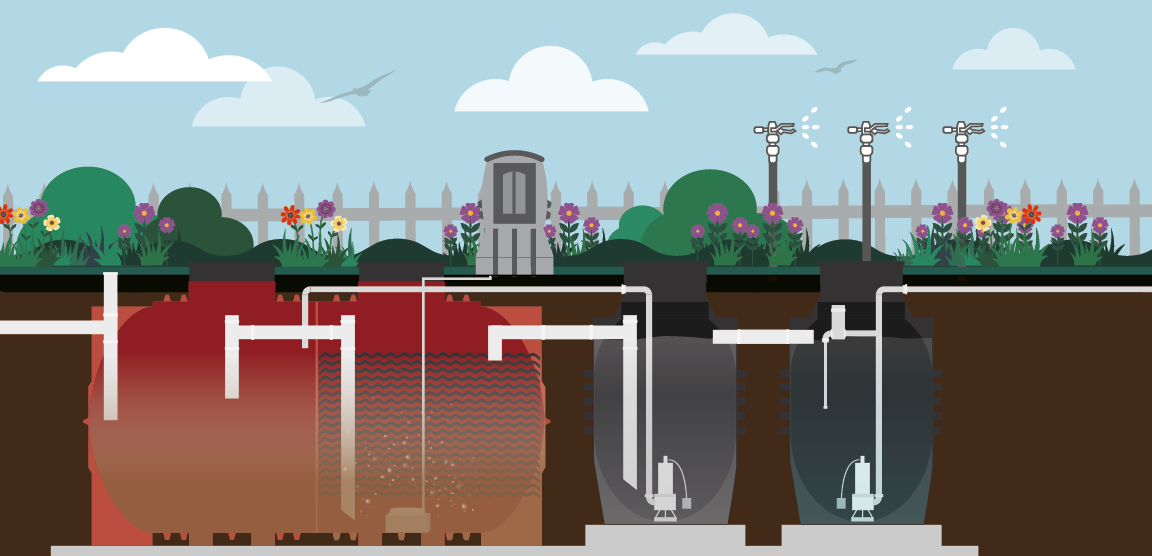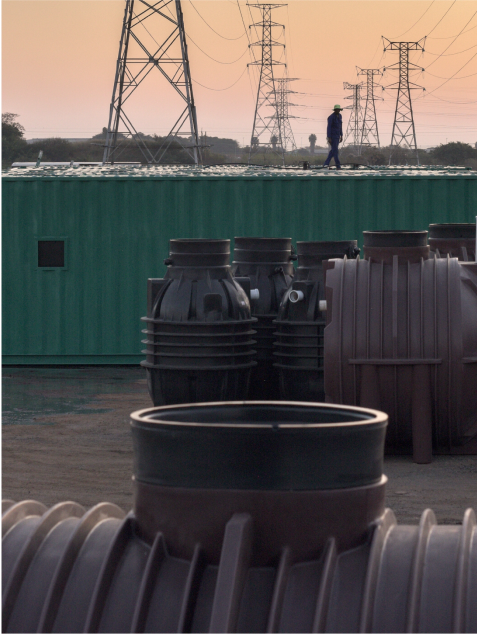With water scarcity becoming an ever-bigger problem around the world, getting water-wise has never been more crucial. As we grapple with limited resources, every drop counts. Today, we want to shed light on an innovative approach that not only makes efficient use of water but also transforms waste into a resource: the biological treatment of wastewater.
Think about the water that flows down your drain or toilet. This wastewater, also known as settled sewage, is often directed to septic tanks, where it undergoes an initial treatment. But what if we told you that this is just the beginning of the process?
This water can be treated further, using biological wastewater treatment methods, to a point where it becomes safe enough for non-potable uses. That’s right, the water that was once considered waste can be reused for activities like flushing toilets, irrigation, or even washing your car.
In this blog post, we’ll delve into how our septic and conservancy tanks facilitate this process. We’ll unpack how septic tanks work, the stages of treatment, and the benefits that you can reap from installing a biological wastewater treatment system in your home or business.
Join us as we explore the advantages of biological wastewater treatment and how it contributes to creating a sustainable future!
How Do Septic Tanks Work?
A septic tank is a key player in the biological treatment of wastewater, but it’s often tucked away out of sight, so many people aren’t sure exactly how it works. In essence, a septic tank is a watertight chamber that provides the first stage of treatment for household wastewater, typically associated with toilets, kitchens, and bathrooms.
Let’s break down the process. The wastewater enters the septic tank, and it’s here that the first bit of magic happens. The tank’s design allows the wastewater to remain stationary, giving it time to separate into three distinct layers.
- First, you’ve got the “scum” layer, which floats at the top. This layer is composed of oils, fats, and proteins – the lighter materials that float on the surface.
- Next comes the “effluent” layer, which resides in the middle. This is mostly water, and it’s relatively clear compared to the other layers.
- Finally, at the bottom, you’ll find the “sludge” layer. This is where heavier materials settle. It’s made up of solids that have sunk to the bottom of the tank, including bits of food waste and other denser materials.
The separation of these layers is a crucial step in the septic tank wastewater treatment process. The effluent in the middle layer can then be safely moved out of the septic tank for further treatment, while the scum and sludge layers are retained for periodic removal.
Now that we’ve set the stage with our septic tank’s initial treatment, let’s move on to the next steps where biological methods play a starring role.
Treatment Process
The Secondary Treatment
Having understood the workings of the septic tank, let’s dive into the secondary treatment. Here, the effluent we mentioned earlier comes into play. This water, having been separated from the heavier solids and lighter scum, is then directed through a filter or, in some cases, a constructed wetland.
This natural, biological treatment of wastewater methods uses microorganisms in the soil or wetland to break down organic matter and pollutants, significantly reducing the number of pathogens and the level of suspended solids. Quite remarkable, isn’t it?
The Tertiary Treatment
But we don’t stop there. The effluent, now cleaner but not quite there yet, proceeds to the tertiary treatment stage. This phase might include various types of filters, such as sand filters or peat moss filters, or even different types of constructed wetlands.
These further assist in removing remaining nutrients, bacteria, and other pathogens from the water. The advantages of biological wastewater treatment are indeed far-reaching.
Disinfection
The final stage in our treatment process is arguably one of the most critical: disinfection. Despite the thorough cleaning the water has already gone through, there may still be residual pathogens present. We don’t take chances when it comes to your safety, so we ensure that these pathogens are entirely eliminated. This can be accomplished using UV light, chlorine, or ozone treatments, each offering their own advantages and ideal use cases.
After going through these rigorous steps, what was once waste becomes a valuable resource that can be used for non-potable applications. This includes uses like flushing toilets, irrigation, and cleaning, to name just a few.
By turning waste into a resource, we’re making the most of what we have and becoming more sustainable in the process. Quite a journey for a drop of water, wouldn’t you agree?
Calcamite’s Unique Wastewater Treatment Process
Building upon the general treatment process we’ve just explored, at Calcamite, we’ve devised a unique wastewater treatment procedure tailored to maximise efficiency and adaptability. Our on-site sewage processing plants are engineered to treat all wastewater, refining it to a specified quality so it can be re-used for irrigation and other non-potable applications. Tertiary treatment can also be added to recycle the water for potable applications if desired.
Our innovative process begins with the Primary Treatment where domestic sewage enters the primary settlement chamber (essentially our septic tank). This chamber allows for the settlement of solids and surplus sludge storage. Here, the gross solids are allowed to settle out under gravity and are gradually broken down by anaerobic digestion. This process results in a relatively solids-free effluent passed into the next stage of treatment.
Next comes the Biological Treatment. Within our bespoke Bio-reactor, a biomass of bacteria works tirelessly to break down the biodegradable waste and convert it into carbon dioxide and water. This technique of biological treatment of wastewater capitalises on natural processes and is one of the standout advantages of biological wastewater treatment.
In the Final Settlement stage, the treated waste stream is gravity-fed into the final settlement chamber. Clear water rises to the surface of the tank and is decanted at the outlet. Periodically, any excess humus sludge is returned to the primary treatment, ensuring an efficient and sustainable process.
Last but not least, we ensure Disinfection and Storage. After the waste stream has undergone the primary and biological treatment stages, it reaches the critical phase of the disinfection process in wastewater treatment. This step, carried out within Calcamite’s sophisticated plants, ensures that any remaining pathogens are effectively killed. This is achieved using either chlorine or ozone treatments. The treated effluent is then stored for secondary, non-potable re-use or disposed of according to local regulations, thus achieving a complete transformation of what was once considered ‘waste’.
Our unique wastewater treatment plants aren’t just efficient and sustainable; they’re also quick to install and easy to operate. With the ability to cater to a wide range of wastewater conditions and to process wastewater into non-potable or potable water, our systems are perfect for households, hotels, lodges, camps, mines, and any other application where waterborne, on-site sanitation is required.
Notably, our system’s design is durable, intended for a lifespan of approximately 30 years, and can accommodate from 1kl to 250kl of effluent per day, making it a flexible solution for a variety of requirements.
In the face of increasing water scarcity, Calcamite’s wastewater treatment systems, designed with a focus on ease of operation, durability, and flexibility, stand as a testament to our commitment to innovative and sustainable wastewater solutions. Let’s take a closer look at the benefits these transformations bring about.
Exploring the Benefits of Biological Wastewater Treatment Solutions
Harnessing the power of the biological treatment of wastewater methods offers several advantages, allowing us to turn a potential environmental problem into a resource-saving solution.
- Water Conservation:
By opting to reuse the water that would have otherwise been discarded, we’re making a conscious decision to conserve one of our most vital resources. Wastewater isn’t waste to us – it’s a precious resource that can be used effectively and sustainably for non-potable applications, aligning us with a water-wise approach.
- Reduced Water Bills:
Financial benefits accompany the environmental ones. Utilising treated wastewater for non-potable applications, such as flushing toilets, irrigation, or cleaning, can significantly reduce your water bills. An on-site wastewater treatment plant brings an economical solution, allowing more savings and better budgeting.
- Positive Environmental Impact:
By treating and reusing wastewater, we’re preventing it from contaminating nearby water bodies. This process not only protects our waterways and ecosystems but also reduces the carbon footprint and helps combat climate change.
- Alleviating Strain on Municipal Systems:
This transformation isn’t just beneficial for the environment and our pockets – it’s advantageous for our municipalities too. By treating and reusing our wastewater, we’re reducing the strain on municipal sewer systems and wastewater treatment plants, making our cities more sustainable and resilient.
In Conclusion
The value of wastewater has been grossly underestimated for far too long. With advancements in technology and the recognition of the importance of resource conservation, Calcamite proudly offers a sustainable solution that marries environmental responsibility with economic sense. Our septic and conservancy tanks and bespoke wastewater treatment systems provide an efficient, robust and green solution to wastewater management.
We’re not just treating wastewater – we’re reimagining it, transforming what’s often dismissed as ‘waste’ into a vital resource. As we continue to innovate and adapt to the changing needs of our world, we invite you to join us in this journey towards a more sustainable and water-wise future!



